| |
| |
Photographer,
Location |
Images |
Comments |
|
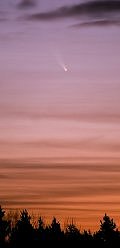
|
P-M
Heden,
Vallentuna, Sweden
Jan. 8, 2007 |
#1,
more |
Even
a clearer view of the comet between clouds. What a great
view it is to see comet McNaught! Think what nature can
bring to us, so everybody get out and enjoy it....it's for
free!!! |
|
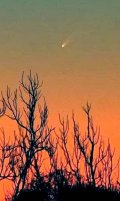
|
Daniel
McKeel,
Pittsburgh, PA
Jan. 7, 2007 |
#1 |
Photo
details: Canon
300D, 300mm lens, f/5, ISO 800, 1/6 sec |
|
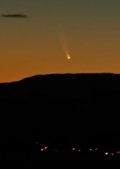
|
Andreas
D. Skjervold,
Boda, Norway
Jan. 8, 2007 |
#1,
more |
When
I stepped outside this morning, I stopped short on my doorstep
as the sight on the morning sky was marvelous. Comet McNaught
was shining almost as brightly as Venus.
Photo
details: Nikon
D70, 70mm, ISO200, 4 sec, f/5 |
|
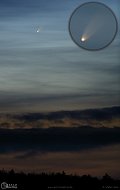
|
Stefan
Seip,
Near Pforzheim, Germany
Jan. 7, 2007 |
#1,
more |
The
inset shows the comet in full size. You can see a darker
lane in the middle of the tail. I was also able to see that
phenomena in my binoculars. The inset is a stack of 19 individual
images (to reduce the noise).
Photo
details: Canon
EOS 1Ds, Canon 600mm/4 lens, f/4.5, ISO 200, 1 second
exposure. Date: January 7th, 2007 Time: 16:32 UT Camera:
|
|
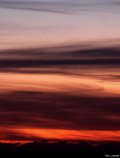
Click
to find the comet
among the clouds.
|
Pete
Lawrence,
Selsey's East Beach, West Sussex, UK
Jan. 8, 2007 |
#1,
#2, #3,
#4, more |
After
watching a break in the seemingly neverending clouds that
have been covering the UK for many weeks now, I got an oppotunity
to see Comet C/2006 P1 McNaught this morning. It's very
bright indeed and I was able to follow it until 07:40 with
the naked eye! A short exposure will reveal the comet's
head and tail well. As it's visible in the morning and evening
twilight, it's really worth putting in the effort to try
and catch this beautiful sight. |
|
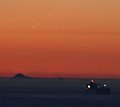
|
Mila
Zinkova,
San Francisco, California, USA
Jan. 8, 2006 |
#1,
#2, more |
I
believe it was the most Southern known sighting of the Comet
McNaught (C/2006 P1). For 5 nights in the row I was trying
to see the comet McNaught, but with the ever present Marin
layer and with latitude 37.66N it seemed to be practically
impossible until tonight. Tonight I even was able to see
Farralon Island (a really rare event in San Francisco).
Marin layer was still there, but it was lower and maybe
not so dense as last few days and I did see the comet!
Photo
details: Canon
XTI, 300 mm lens, 1 second exposure, ISO 400. |
|
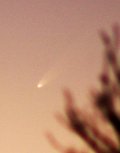
|
Tim
Printy,
Manchester, NH
Jan. 8, 2007 |
#1 |
I
found Comet McNaught about 25 minutes after sunset. It was
about magnitude -1 with a short tail. I managed to get a
few pics before it set into the treeline.
Photo
details: This is a stack of 7 images taken with
a Nikon
D70 set at ISO 200 using a 400mm F5.6 lens. Exposure
time was 1/25 sec. |
more
images: from
Allen Ginzburg of Aptos, California; from
John D. Sabia of Clarks Summit, Pennsylvania; from
Mark Million of Earlham, Iowa; from
Joseph M. Golebieski of Toms River, NJ
|
|